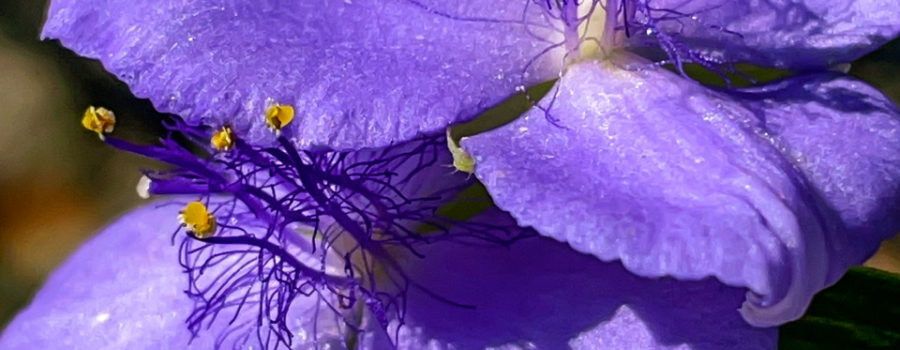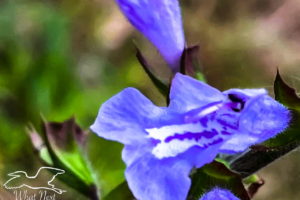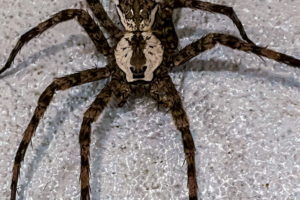Spiderworts are Very Interesting and Beautiful Plants

Not too long ago I went down to visit my Mom for a bit and decided to take her dog out for a walk. She lives in the city, so it’s not exactly like taking the dogs for a walk here. Here I always carry leashes, but rarely use them, but down there a dog walk definitely needs to be done with a leash. It’s been a very long time since I went for a walk in my Mom’s neighborhood, so I figured there would be some cool things to take pictures of, so I took my camera. I wasn’t sure how well that would work out with camera in one hand and dog on a leash in the other. But I was pleasantly surprised. The dog is pretty good, and she’s used to walking with my Mom, but Mom doesn’t stop for every pretty flower and bush along the route. I will have to say that at first the dog did seem a bit confused by my constant stops, but she quickly adjusted, and we both had a nice time.

One of the many things that I took pictures of was the absolutely gorgeous Ohio spiderwort (Tradescantia ohiensis), which is also sometimes called bluejacket (that’s actually the name I know it by). There are actually 75 different species of spiderworts, all of which are native to North America, and several of which look very similar. In fact, the only way I was able to determine for sure that this was really bluejacket (I’ve been given misinformation by locals before!) was by looking up the ranges of the similar looking varieties. Then, to confuse matters even more (nothing’s ever simple, is it?), where two of the very similar species coexist they will often produce hybrids. What a nightmare for taxonomists!!! But luckily for me, we only have the most common of those similar looking varieties in this area, and it is indeed the bluejacket. The range for bluejacket is from Maine south through Florida and as far west as Minnesota and Texas. The range even extends slightly into southern Canada in the Ontario area.

Bluejacket is really a pretty interesting plant. It is often used for ornamental reasons in gardens and as a border plant, but in the wild it grows along roadsides, in ditches, in fields and meadows, along pasture fences, and along woods edges. It will grow in just about any type of moist, well drained soil from sand to clay. The plant likes partial shade to full sunlight and is extremely hardy. The bright blue to purple flowers are very showy and the plant starts blooming in the spring and continues well into the fall. The flowers grow in large bunches at the end of the stems and each flower lasts for only one day. Usually only one to two flowers in a bunch bloom each day. In the mornings the flowers are bright, vibrant, and full of life. By midday they are beginning to wilt, and by late afternoon they have degenerated to a sticky, gooey mass. By the following morning there is no sign of yesterday’s flowers, but a couple of fresh new ones have taken their place. Like many other plants all the plants of the genus Tradescantia can reproduce by by seeds and by root division, so they are often found in the wild in clumps.

Besides being beautiful to look at and having some interesting characteristics, bluejacket can be quite useful. The leaves, flowers, and stems are all edible. The leaves and flowers can be eaten raw as part of a salad or can be sautéed in butter and spices and used in soups, stews, and casseroles. The stems are usually either sautéed, boiled, or steamed, and are said to taste a lot like asparagus. Bluejacket has also been used medicinally for quite a few ailments. Poultices made from the leaves were used by some Native Americans to treat skin cancers, while a tea made from the leaves was used as a laxative and to treat digestive upset in general. Teas were also supposed to be useful in treating kidney issues. And finally, if the leaves are crushed and rubbed on insect bites and stings they will help to stop the discomfort. I have never tried it, but I have been told by several of the hunters in this area that it really does work pretty well.

As you can see, this plant has a lot of great qualities, but before I finish up there is one more I need to tell you about! This plant has almost no pests that bother it and rarely gets any plant diseases, making it very easy to care for if planted in a garden or lawn. Even though it has almost no insect pests, it is very attractive to pollinators, especially butterflies. All in all, this is a pretty awesome plant with lots to recommend it!

If you like beautiful nature photography and artwork along with intriguing and informative content, then you will really enjoy this blog. Join us today by entering your information below!





Recent Comments